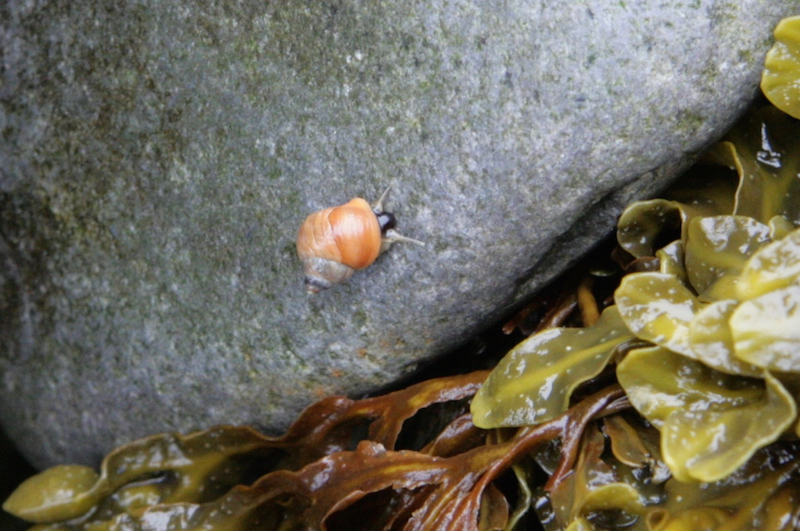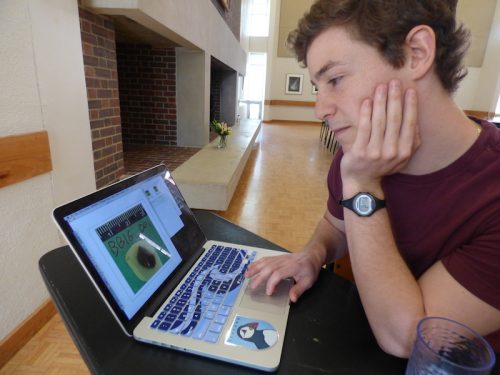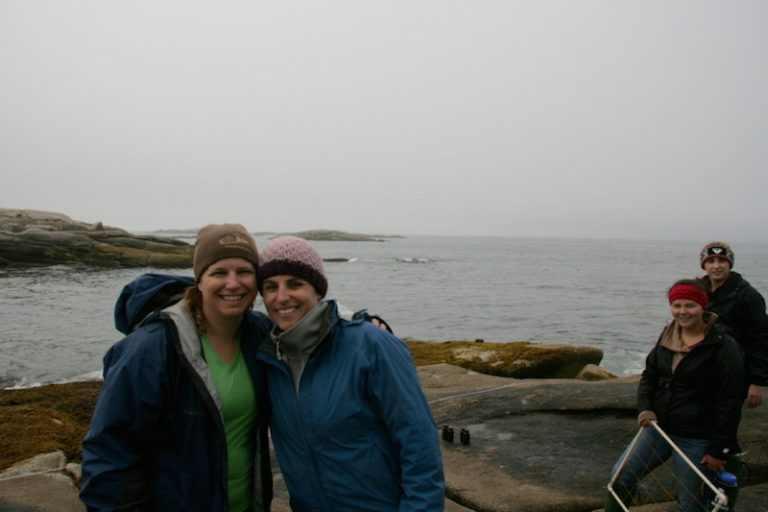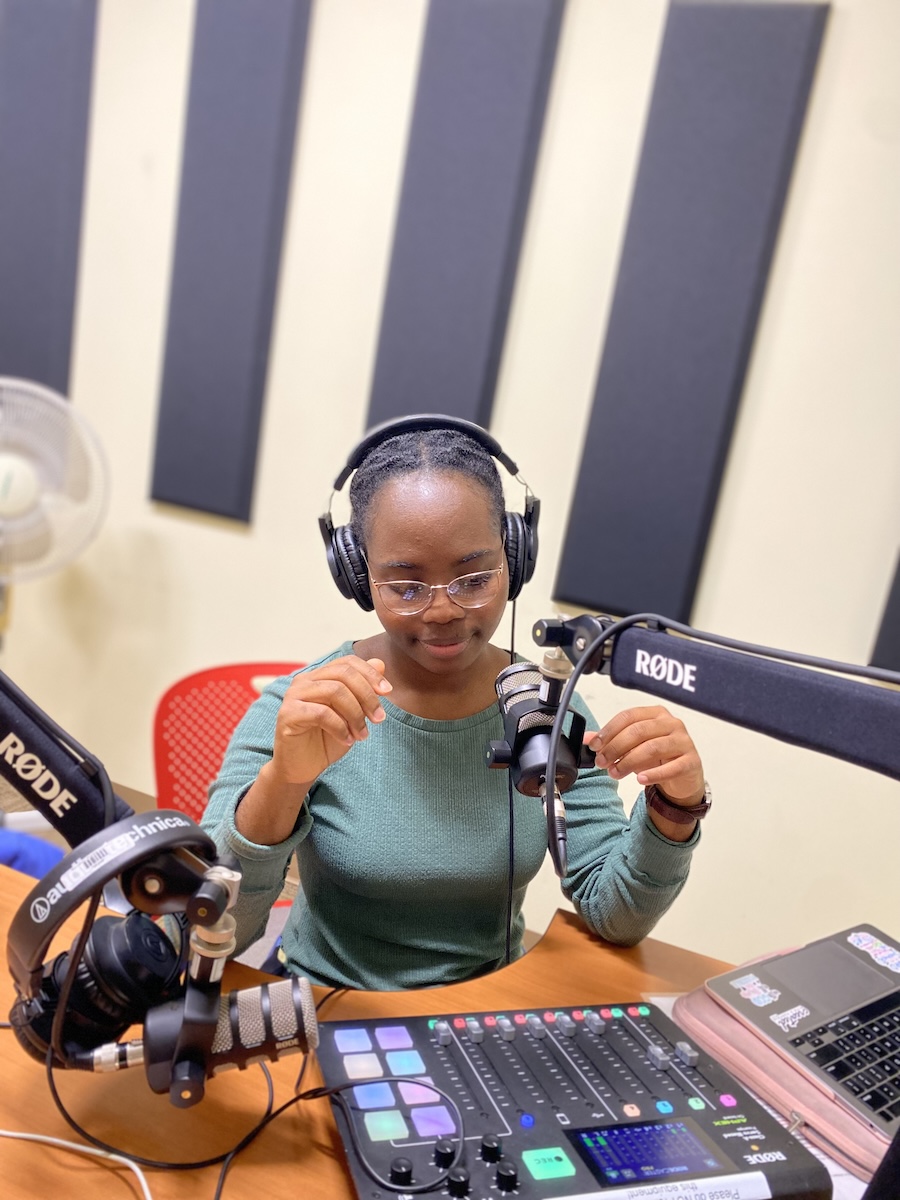The Poetic Possibilities of Snail Research
By Rebecca Goldfine
The Bowdoin Marine Science Semester students and faculty have launched a longterm study to determine how the rough periwinkle is adapting to Maine’s upper intertidal zone
The Bowdoin Marine Science Semester launched four years ago with large ambitions for enriching student’s education with research in the field. Since then, molecular ecologist Sarah Kingston — one of the program’s fulltime faculty — has been hatching excitement among her students about tiny things, from the DNA of blue mussels to the muscular feet of snails.
In one longterm study, Kingston has focused her students’ attention on the rough periwinkle, a common snail found clinging to rocks up and down Maine’s shoreline. This project could open a window into the natural history of rough periwinkles (Littorina saxatilis) along the Maine coast — and observe evolution in action right here on our shores.

Clayton Starr ’19 showing the geomorph program used to measure shell differences in snails
Clayton Starr ’19, who participated in the Marine Science Semester last fall, is one of the students taking a leading role in the research project. “What is cool about snails is they’re poetic,” the English and environmental studies major said. “You can ask big things of little creatures: where they come from, are their populations different, are there ecotypes [snails that physically change to better survive environmental variations].”
He continued: “This can give you insight into how they formed, how they continue to form, and get at questions of evolution: Are different species forming?”
He continued: “This can give you insight into how they formed, how they continue to form, and get at questions of evolution: Are different species forming?”

Sarah Kingston and Bobbie Lyon, former BMSS faculty and Coastal Studies Scholar, on Hurricane Island, one of the places students study snails. Also pictured are Emily Bodell, Wheaton College ’17, and Madeline Schuldt ’18, both BMSS 2015 students.
“The snails in the protected areas have thicker, beefier shells that are harder to crush with a crab claw, and a much smaller aperture or foot,” Kingston said. “So they’re not as good at being able to hold onto the rock. But they don’t need to be. Instead they need to be able to pull in their foot and hide from a crab.”
Meanwhile, the rough periwinkles living in turbulent locations have to steadfastly clasp the rocks as they get pounded by waves. So their foot apertures are bigger, and they have bigger, stronger feet. Their shells are also smaller and lighter.
“These two different forces in the intertidal are driving physical differences that we can see in the snails, and this hasn’t been well described in the western North Atlantic,” Kingston said.
This semester Starr had an independent study to systematically measure and analyze the more than 500 snails collected by students from 18 different seaside spots. He will be a co-author on an article Kingston plans to submit for publication by summer’s end. In addition, Starr and other marine students have been extracting snail DNA to determine whether the physical differences they observe in the snails correspond with genetic ones.
So far, their findings indicate that the two ecotypes aren’t species. . . yet. “There are genetic and physical differences between the wave-protected and wave-exposed types, but it’s not different enough to call separate species,” Kingston said. “However, the process that drives them to different types is the same process that may eventually spawn species. They are potential incipient species, assuming they remain on current trajectory (which isn’t certain).”
Kingston plans to keep working on the snail project with future students, who will help her investigate possible additional ecotypes. “In future research efforts, we may try to locate a barnacle morph of the snail that lives in the hollowed plates left by dead barnacles and compare that type to our protected and exposed ecotypes,” she said.
So far, their findings indicate that the two ecotypes aren’t species. . . yet. “There are genetic and physical differences between the wave-protected and wave-exposed types, but it’s not different enough to call separate species,” Kingston said. “However, the process that drives them to different types is the same process that may eventually spawn species. They are potential incipient species, assuming they remain on current trajectory (which isn’t certain).”
Kingston plans to keep working on the snail project with future students, who will help her investigate possible additional ecotypes. “In future research efforts, we may try to locate a barnacle morph of the snail that lives in the hollowed plates left by dead barnacles and compare that type to our protected and exposed ecotypes,” she said.



